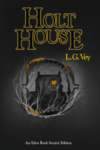
[A Public Space; 2021]
Tr. from the German by Alexander Booth
Does Friederike Mayröcker’s The Communicating Vessels really tell a story? One could sum up the book’s contents easily: a biography, at times autobiography, of modernist poet Mayröcker’s life after the death of her husband, writer Ernst Jandl. The book describes both the aftermath of Jandl’s death in 2000 and Mayröcker’s own interpretation of the event. The subject could be the story of how they met in the mid-fifties and how they saw each other. Perhaps the text is about making something out of grief, coming to terms with death, getting a grip. But not really. Ultimately, more than positively being about something, the book hints at eliminating such a possibility altogether.
Mayröcker had previously published in her native German her collected poems and a five-volume collection of her prose. However, The Communicating Vessels marks the second translation of her prose into English, after études (Seagull Books, 2020). The book’s two parts, “The Communicating Vessels” and “I Shook Myself a Beloved,” are similar in subject — a continuous, neurotic reflection on death — and style — a continuous, neurotic stylization of death. It’s not so much that Mayröcker has gone from poetry toprose, but from writing to writing. Because the work isn’t about poetry as abstract thought, but about poems in all their breathing materiality; conversely, it’s also not about narrative as concrete retelling, but about narrative in its miraculous capacity for abstraction.
Mayröcker writes and thinks of death as nothing special, like in her poem “Conception of Death”: “I can only do what I can do of it.” Enumerations and drawings of objects through stenography (paintings, lilacs, sheets of paper) mark her prose. They are maybe a metaphor or a strategy for representing both the limitations of shape and form and the dumbness of death, as Gertrude Stein also likes to remind us in her work Tender Buttons. Metaphor itself, as Mayröcker puts it, is the “sprouting of the hidden,” or a sense of feeling dumb, as if saying, “ach, my brain” (from the poem “Velázquez these sheep . . .”).
Alexander Booth’s translation masterfully gives way to Mayröcker’s antics. One intuits that the translation is never ahead of the text, but that the galloping sentences in the original German exist independently of any equivalences. In The Communicating Vessels, Mayröcker herself speaks of translation as syncopated, of writing that is “how life is metamorphosed into language.” Syncopations and apparitions echo a “love affair with [EJ’s] voice” — writing and bodily functions, such as the pumping of blood in and out of the heart’s aortas, are the same, the unseen thing inside.
As for the text’s prose, the mechanism by which Maryröcker thinks is also a mechanism for reading. The reader is called to as an addressee beyond life and death: she speaks not to Jandl, but to a “Dear reader.” If this “Dear reader” refuses to play the game, the free association underlying the text will crumble. The Communicating Vessels suggests that freedom of thought is not that convincing. Because one is alive, because one is beloved, one cannot think for oneself but only for others. Similarly, being beloved is for Mayröcker to be tied down to the otherness of thought. Then, freedom of speech turns out to be an unbearable blabber. This recalls the thinking of André Breton, who writes in Les Vases Communicants (1934), his critique of Freud’s The Interpretation of Dreams: “it tends to convince me, because I am alive, that no one is irreplaceable, for the single reason that this idea is contrary to life.” While grief implies singularity, death itself is open and massive, an afterthought of war. Grief in Mayröcker’s life, which spans the twentieth century, is not “a sign of the times,” but a sign of what cannot be known ever again, because it is out of time.
The Communicating Vessels goes beyond the realism of fact and number, but also beyond the unreality of fiction. On the one hand, we get to know almost nothing about Jandl or about Mayröcker herself, so there are no facts to speak of, no sign of confession, no interest in information but in form. On the other hand, through Mayröcker’s disconnected prose, The Comunicating Vessels reminds us that we are far from the sacredness of poetry and are only left to deal with matter-of-fact writing, the bare recounting of a life: “it is what it is.” Sign shows up literally through stenography. But the pictures are always sketches, unrealities onto themselves.
Because death is an afterthought, Mayröcker manages to escape, or at least avoid, the dialectics of loss, a dialectic which tends to end in the acceptance of the fact that grief is never-ending. This typically involves the one who grieves going from filling up with loneliness to a deflating emptiness. Instead, she plays with the continuum between full and empty, and reconfigures it into a sort of melancholy without nostalgia. Writing prose is not cathartic. Rather, it’s a way of merging death and life — by including endless clauses between the two, she says “and yet . . .” to avoid confusing confession with earnestness. Her writing rejects consolation.
Even at its most anecdotal, poetry is never what it is, but what it is not. When making a show of its technical feats, it’s at its most mundane; and, when at its most mundane, it gets unintentionally technical. But The Communicating Vessels is one of those rare cases where illustriousness and mundanity are merged. It’s the hollow “skull of 1 bird” (from Mayröcker’s “to EJ”), or in the words of Paul Valery: “Every skull he picks up is an illustrious skull.” Death can teach us nothing, just like anecdote can teach us nothing. Mayröcker’s work reckons with our desire to fill up the excess of death with anecdote. The author herself, subject of both biography and autobiography, is left to deal with the impossibility of narration against the actual possibility of scribbled words on a page. The potency of violent thought is pitted against a tenderness we must hold near.
As in Breton’s Nadja, the retelling of an encounter between two lovers,people’s influence and bodies dissolve despite our efforts to invent a personal geography. Breton wonders: “Don’t I love her? When I am near her, I am nearer to things which are near to her.” As a partly fictional character, Nadja herself — or in this case, Jandl — marks an absence whenever they are named by the biographer. In Les Vases Comunicants, Bretonlooked to link death and life, dreaming and waking, object and chance (condensed as “object of chance.”) Breton asks: “How can we retain . . . from waking life what deserves to be retained, even if it is just so as not to be unworthy of what is best in this life itself?” So, how can Mayröcker separate Jandl’s life from her own? Similarly, what is left in The Communicating Vessels is not quite biography (“he”), not quite autobiography (“I”), but a conjugation of the two (“you and me”).
Breton’s journal in Les Vases Comunicants, set side by side with his programmatic writing, betrays his feelings of solitude when surrounded by his own community. When Mayröcker says “you and me,” she also marks a distance from communal thought. For all the mentions of Gertrude Stein and her peers, such as Pablo Picasso, Mayröcker is not concerned at all with generational wealth of intellect. At the same time, Mayröcker doesn’t read according to plan, never reads what she’s supposed to. Her reading throughout her narration is erratic and repetitive, a nightstand obsession. Despite it all, she cannot comprehend Stein’s own fascination with the contemporary, her self-conscious efforts to be part of something. No, Mayröcker was already a part of her beloved’s life and death, and that is enough.
The Communicating Vessels doesn’t quote Jandl with precision, not in the way generations seem to quote themselves as if they were at once past and present. For Mayröcker, there are no generations, but only “the doubtful contemporaneity of the present to itself,” in the words of Jacques Derrida in Spectres of Marx. Perhaps, the constant quoting of Derrida’s POSTCARDS in the first half of the book marks Mayröcker’s predilection towards the past’s future as it appears in Spectres, in which the philosopher reckons with a spirit through his interpretation of Hamlet. Making justice for a spirit only works “toward a living-on [sur-vie], namely, a trace of which life and death would themselves be but traces.” The trace is, in other words, an imperative to “make something out of it”: thus, writing and stenography enter the picture. Surviving Jandl is, like Derrida suggests, a responsibility.
In the second section of the book, “I Shook Myself a Beloved,”getting ready for death is a tiny little thing, as important as eating at a restaurant or walking down the street. Contrary to Breton’s intent, Mayröcker seems to believe that the certainty of statement puts doubt to sleep. One is reminded of poet Edmond Jabés’ The Book of Questions, where he writes that “To have the responsibility of a word,” it’s necessary to account for “a here that is a now, [. . .] it is not a country, not a man, but all men.”Mayröcker is well-aware that her beloved husband is not a man, but all men, and that there is no such thing as to be one single, singular, man.
In her writing, capitalization in The Communicating Vessels is strange in the way importance is strange. Its usage is an attempt to make something valuable and personal out of the already-made like her citing of Catalan painter’s Antoni Tapiès’ (stylized in the book as TAPIES) paintings. There’s a brief scene where Jandl tells Mayröcker that she’s an underrated writer, but she reflects that she cares not for writing’s rewards. She opts for “Disenchantment” and “dignity” instead. Precisely, in The Communicating Vessels,the singularity, the “one” or the “an,” takes the shape of the number 1. A seemingly important word has been replaced by a cold number, an event appears as a list. This suggests the (auto)biography is no more than the public history of World Wars: Jandl’s death is so massive that it goes on to stand for death itself.
One comes to the conclusion that the explicit, foundational intercourse between theory and dream is an aid to memory after death. There is a balance to be achieved between explaining away and imagination. This is so because, for Mayröcker, writing is beyond knowledge. Mayröcker states, knows intimately, that like Breton says, we’ll never truly know what we know. We know enough to love others, but in Breton’s interpretation of Freud, we have no control over such knowledge. However, in Mayröcker’s version of Modernism — which owes a debt to Surrealism — what Breton calls “vulgar romanticism” is desirable for writing as a practice: love is the subject, as a whole, as an imaginary thing. The subject is not the beloved, the singular man. That is perhaps the reason why her husband is not mentioned often, and at times seems like a stranger. Where the reader expects a name, Mayröcker gives us initials.
This is not a semiotics of longing, not a sociological investigation, not a treaty. It makes sense that Mayröcker never attempts to idealize the Modernist project, but can only cry for its failure. This approach implies a sort of death, the grand mort: the loss of an omnipotent statement, loss of future certainties. It’s out of this lack of thought, or the impossibility of it, that The Communicating Vessels features repeated scenes in which the intellectualization of romance doesn’t quite triumph and the seriousness of the elegy fails completely. The first scene in the book, a quite concrete retelling of a first encounter at a jazz concert, asks us to keep Mayröcker’s most intimate secret: “I wrote this without thinking.”
Carla Chinski is a writer, critic, and translator based in Buenos Aires, Argentina. She holds degrees in Translation, Art History, and Publishing. She has published two poetry collections; one of them has been translated into English. Her academic research at the University of Buenos Aires focuses on experimental film and ecopoetics.
This post may contain affiliate links.







